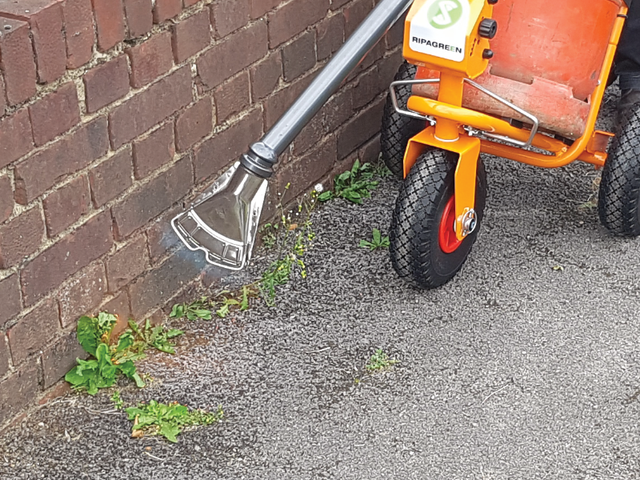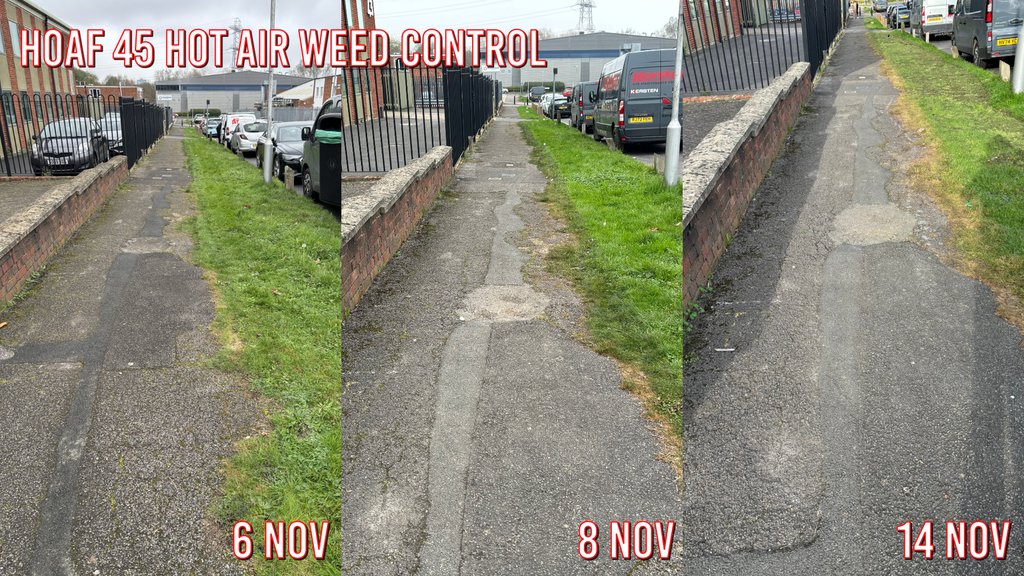🌱Thermal Weeders - Why Charring Isn’t Necessary
You Don’t Need to Burn Weeds to Kill Them: The Truth About Thermal Hot Air Weed Control
In the world of professional grounds maintenance, thermal weed control, particularly using hot air is becoming an increasingly popular choice. It’s a quick and convenient method, requiring minimal setup and ready-to-use functionality straight out of the box. But there's a persistent myth that for this technique to be effective, the weeds must be visibly scorched or charred. In fact, not only is this unnecessary, but it’s also inefficient and can even harm the surrounding environment.

How Thermal Weed Control Works
Thermal weeders, such as hot air lances, operate by exposing weeds to brief bursts of high temperature. As Knezevic et al. (2016) mentioned a temperature of around 55-70°C is enough to rupture plant cells, effectively stopping photosynthesis. This thermal shock causes the plant to die within days without any need to char the foliage. The key here is cellular disruption. When the plant's cell walls and proteins are damaged by heat, they lose their ability to function. Heat can denature proteins and cell structures leads to irreversible damage and plant death even if the weed still looks green immediately after treatment.

(Example of using Hoaf 45 Hot air Weeder to treat the pavement from 2024 November)
Kersten thermal tools like Ripagreen and HOAF WeedAir control weed with hot air. The WeedAir is engineered with an insulated base that eliminates direct flame, relying solely on hot air to treat weeds. In the image above, the HOAF 45 targets the pavement edge with controlled heat. Even at temperatures reaching 600°C, vegetation remains unburned due to the absence of open flame.
(Image of WeedAir design and air flow)
Why Excessive Heating is a Problem
Using more heat than necessary is counterproductive. For example, it consumes unnecessary fuel and energy, which increases operational costs and carbon output. Moreover, Amis (2009) found that excessive heat can damage beneficial microorganisms in the soil, and in some cases, degrade soil structure. This can make long-term soil health and vegetation management more difficult.
Target the Right Plants at the Right Time
Thermal weeding is especially effective against young, fleshy plants, which are highly susceptible to heat due to their limited energy reserves. Ascard (1995) observed that weeds with thin leaves or upright structures are more vulnerable to heat than those with thicker, more robust forms. This makes early intervention in the growing cycle particularly effective. Páli et al. (2007) confirmed that thermal methods significantly reduce weed viability when applied correctly and at the appropriate plant growth stage. This means less energy is needed per treatment, and there is no benefit to increasing heat levels to the point of visible charring. As Mojžiš et al. (2015) concluded, rational energy use is crucial for successful weed control. Overheating not only wastes fuel, but it also increases the risk of fire, especially in dry, detritus-rich environments. Removing debris in winter can significantly improve the safety and effectiveness of spring treatments.
Conclusion
Thermal hot air weed control is a sustainable and effective solution for grounds maintenance—but only when it’s applied strategically. Burning weeds not only adds no benefit, but it can lead to wasted energy, increased costs, and environmental damage. By focusing on precision, timing, and intensity, we can improve results while reducing our ecological footprint.
🔗 References
- Amis, M. (2009). Thermal weed control: Environmental implications. MSc Thesis, Cranfield University. Available at: https://dspace.lib.cranfield.ac.uk/handle/1826/20803
- Ascard, J. (1995). ‘Selective flaming of weeds in carrots’. Weed Research, 35(5), pp.397–403. https://doi.org/10.1111/j.1365-3180.1995.tb01636.x
- Knezevic, S.Z., Fennimore, S.A. and Datta, A., 2016. Thermal Weed Control. In: Hatcher, P.E. and Froud-Williams, R.J. (eds.) Weed Research: Expanding Horizons. Oxford: Wiley-Blackwell, pp. 133–144.
- Mojžiš, M., Šugár, A. and Greifová, M. (2015). ‘Experimental determination of lethal doses of heat in thermal weed control’. Research in Agricultural Engineering, 61(4), pp.161–167. https://www.agriculturejournals.cz/artkey/rae-201510-0013_experimental-determination-of-lethal-doses-of-heat-in-thermal-weed-control.php
- Páli, T., Kazinczi, G. and Németh, É. (2007). ‘The use of thermal weed control methods in integrated weed management’. Cereal Research Communications, 35(2), pp.885–888. https://link.springer.com/article/10.1556/CRC.35.2007.2.180
- Peerzada, A.M. and Chauhan, B.S. (2018). ‘Thermal Weed Control: History, Mechanisms and Impacts’. Weed Science ResearchGate. https://www.researchgate.net/publication/322810962_Thermal_Weed_Control_History_Mechanisms_and_Impacts

No comments yet. Login to start a new discussion Start a new discussion